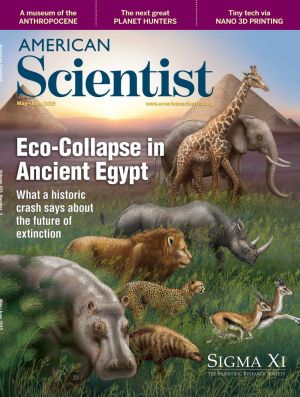
Modern Lessons from Ancient Food Webs
Reporting on this paper was on the cover of American Scientist 3, 2015.
More here: (link)
"Ancient art fills in Egypt's ecological history"
"Ancient Egyptian rock inscriptions and carvings on pharaonic tombs chronicle hartebeest and oryx — horned beasts that thrived in the region more than 6,000 years ago. Researchers have now shown that those mammal populations became unstable in concert with significant shifts in Egypt’s climate..."
More here: (link)
"Clues to animal extinctions found on walls of Egyptian tombs"
Coverage in Science:
"Six thousand years ago, Egyptian lions hunted wildebeests and zebras in a landscape that resembled the Serengeti more than the Sahara. Since then, the number of large mammal species has decreased from 37 to eight, says quantitative ecologist Justin Yeakel of the Santa Fe Institute. New research using ancient animal depictions tracks the collapse of Egypt’s ecological networks one extinction at a time, offering a glimpse into how climate change and human impacts have altered the structure and stability of ecosystems over millennia...."
More here: (link)
"Egypt's mammal extinctions tracked through 6000 years of art."
Coverage in the Smithsonian Magazine:
"Ancient Egypt’s highly decorated tombs and funerary objects—meant to ensure a safe trip into the afterlife—also hold a rich record of the region’s wildlife. Now scientists have used that art, along with other paleontological, archaeological and historical evidence, to map out the rise and fall of Egypt’s large mammals and match those patterns to changes in climate and human interactions...."
More here: (link)
"Ancient Egyptian art opens window on mammal extinctions"
Coverage on NBC:
"Images of lions, giraffes and other creatures on Egyptian artifacts have helped in creating a 6,000-year record of local extinctions, scientists say..."
More here: (link)
Further Coverage
This paper received further coverage in:
- Archaeology (Sep 9, 2014) (link)
- Daily Mail (Sarah Griffith, Sep 9, 2014) (link)
- Austrian Broadcasting (Sep 9, 2014) (link)
- New Historian (Tajrul Hague, Sep 15, 2014) (link)
- Popular Archaeology (Sep 18, 2014) (link)
- Financial Times (Sep 10, 2014) (link)
